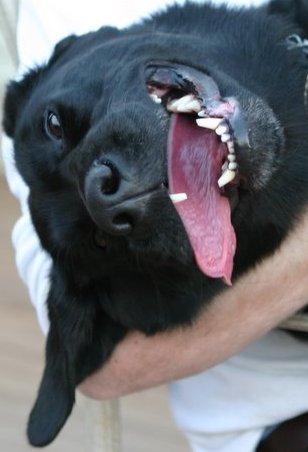Protecting yourself from criminals is as natural as buying a fire extinguisher to put out fires (but more expensive). Get fences, dead bolts, and lock your windows at night but if someone really wants to get in your home they will. Police take 11 minutes or more to respond to violent crimes 40 percent of the time (sometimes hours), under normal conditions. A lot can happen in 11 minutes and you are going to wait a lot longer in a crisis. When someone is kicking in your door, it is too late to go buy a gun. You are on your own. Relying on the kindness of someone breaking into your home is not a good bet.
If you are a gun person, pick your own gun. This advice if for those who don’t own a gun or don’t shoot. I suggest a pistol, a rifle and a shotgun for every adult (check you local gun laws). If I had to only have one gun it would be a shotgun because of their versatility. A 20 gauge shotgun is more than enough for most purposes including home defense and has less recoil than a 12 gauge. The Remington 870 is a great choice but many people also like Mossberg. Take a class on using the shotgun for home defense. For home defense ammo, I use bird shot. This will not penetrate and stop a criminal as fast as buck shot but is also less likely to go through a wall and hurt an innocent person. Make your own decision here based on who is in adjoining rooms and how close the neighbors are. You can always load bird shot as the first few shells followed by buck shot (keep about 200 rounds on hand because it will be hard to buy in a crisis). The only options I recommend are hearing protection, glasses, a cleaning kit, a sling (guns with slings don’t get set down in bad places as much) and maybe a light or night sights. I think the factory stocks are fine.
Next on my list would be a .22. The Ruger Single Six is a nice revolver that is convertible to either 22 LR or 22 magnum (This might be a better choice as the only gun for some people). Also get a holster for it. Savage and CZ make bolt action rifles that are great bargains. A .22 is a little small for home defense (it is less likely to stop a criminal in his tracks) but a lot better than nothing. It is also important to be comfortable with your gun and a .22 is fun to shoot so you are more likely to practice (.22 ammo is very cheap and you can get 1,000 rounds for about $20). As soon as you are comfortable with the .22 and your budget allows, you should probably upgrade to a larger common caliber (.357 for a revolver, 9mm, .40 or .45 for an automatic pistol, 12 gauge for a shotgun, and .223, .308, 7.62x39, .30-30, or .30-06 for rifles). Get a concealed weapon permit if your state allows them even if you don’t plan on using it (carrying a gun). Again, these take some time to get so you have to get one before you need it even if you think that will be never. Also, the required classes are really great and focus mainly on when not to use a gun. Almost any gun range will offer such a class (and many others that are worth it too). In general, buying a used gun is fine (simple guns are very durable) but for the guns I recommend here, the premium for a new gun (gun store or some sporting good stores) will probably be less than $100 and probably worth it to avoid any mechanical issues to start with.
Learn the gun safety rules and locking up any guns not on your body is a good idea and a necessity if you have kids (or adults who act like kids) in your home. For pistols you can get a cheap keyed safe for about $20 (also good for documents). Then you have to hide the key where you can find it quickly but no one else can. A combination safe is better but a lot more expensive (practice opening it in the dark). For long guns you can get a locking cabinet for about $100 (some cases have a good lock and that is a good idea for taking with you in the car), put a lock on a closet, or get a real safe for about $1,000. Trigger locks are generally a bad idea because you can accidentally pull the trigger when getting them on or off.
If you decide against a gun, at least get pepper spray, a baseball bat, or a flashlight. A self-defense class would be good too (martial arts classes are good but take a long time to become practical). A bullet proof vest and helmet would be good but neither is inexpensive. Finally, there is safety in numbers. Staying with family and friends during a crisis is a good idea if resources and space allow.
Friday, October 19, 2007
Subscribe to:
Post Comments (Atom)

1 comment:
The 200 rounds is meant to be a absolute minimum. Thousands of rounds with reloading supplies is better as your budget, space and skills allow.
Post a Comment